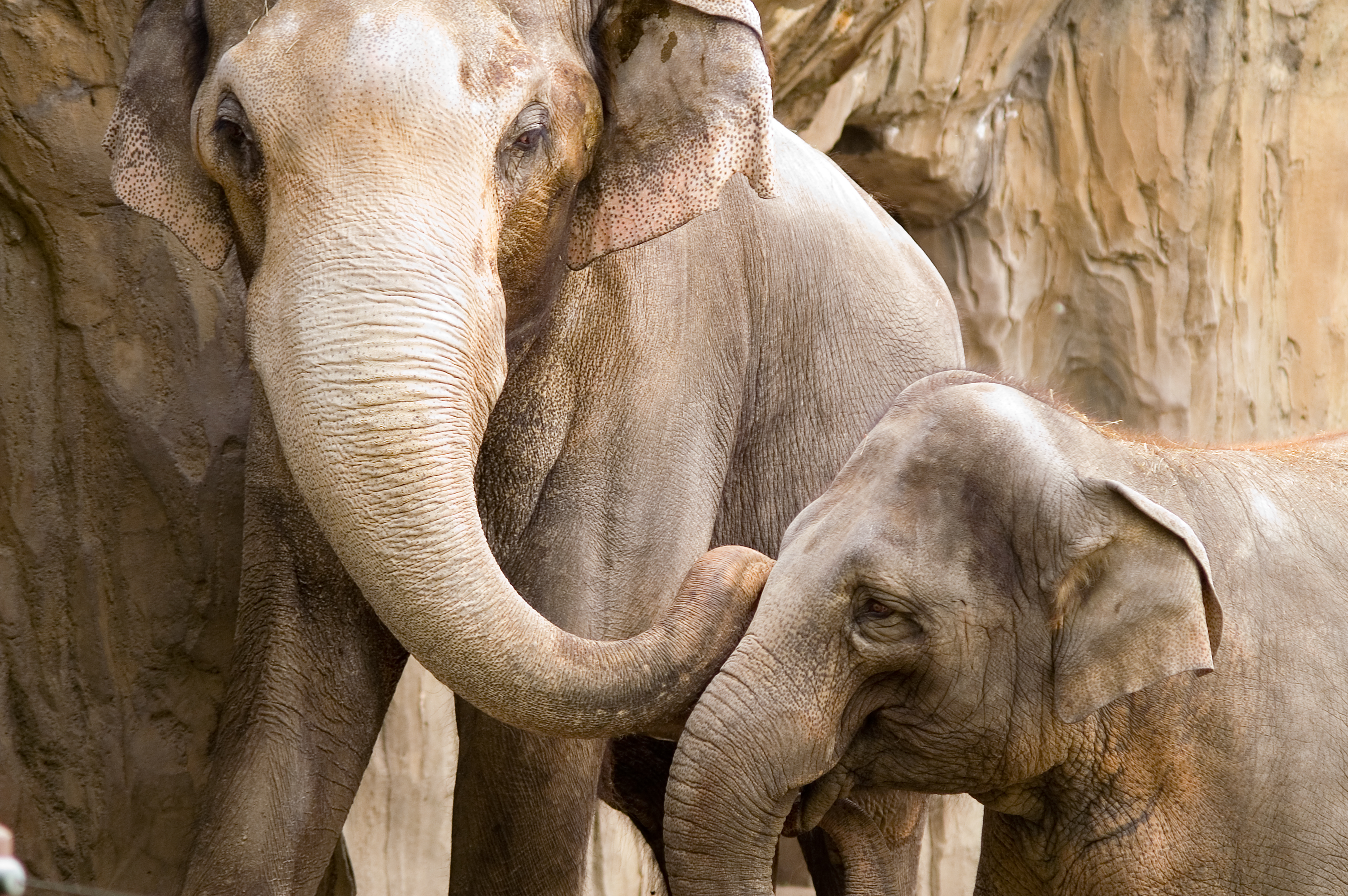I observed three Asian Elephants (Elephas maximus) at the Houston Zoo on a clear, temperate day. I focused my observations on interactions between the three elephants; a mother and her two children. The elephants were held in a large fenced-in enclosure with a pond, grassy areas, and sandy areas. The mother elephant I observed exhibited many examples of well-known elephant parental care strategies.
When I first arrived, only the mother elephant was in the enclosure. She was drinking from the pond when her two children were released into the enclosure one by one. The mother greeted her children by running her trunk over their faces. According to some studies, elephants use this “mouth check” to determine the health and mood of their companion. Scientists believe that elephants have distinct chemical differences in their breath that another elephant can pick up through their trunks (reviewed in Langbauer 2000). The calves also greeted each other in this fashion.

"Elephants-OregonZoo” by StuSeeger is licensed under the terms of the cc-by-2.0.
The elephants seemed to rely heavily on touch throughout my observation. The initial “mouth check” greeting was then followed by many more instances of contact. For example, one of the calves proceeded to stand right next to and slightly behind the mother elephant while eating. The elephants stood next to each other, touching, while both ate the grass below. This stance could provide a protective barrier for the young elephant, hiding the calf from predators or any other dangers (reviewed in Langbauer 2000). In many elephant groups in the wild, the females cooperate to care for the young, and have even been known to work together create a physical barrier from predators (Archie and Chiyo, 2012). Therefore, this protective stance is exhibited in both captivity and in the wild.
After a while, the zoo workers introduced a new water source into the enclosure. Presumably, this water was more desirable to the elephants than the pond water. As the calves were competing and roughhousing for the new water, the mother elephant kicked the calves. This kick is a typical sign of elephant parental discipline. Although this scenario is specific to captivity, the act of kicking the young as a form of discipline also happens in the wild (Langbauer 2000).
Elephants are very social animals that live in cooperative groups, and a lot of their socialization is between mothers and their young. An important way to understand elephants is to look at these behaviors of parental care through an evolutionary viewpoint. Since natural selection leads to an increased number of individuals in a population with advantageous genes, it can be hypothesized that these behaviors have evolved because they are beneficial to elephants. Since an elephant mother is able to sense illness in her calf’s breath, it makes it easier for her to attend to and protect the calf from an early death. This sense would extend the survival rate of elephants with the “mouth check” gene and therefore spread that gene to future generations, if this behavior is, in fact, genetic. The same principle applies to the ability of mothers to practice discipline and to create physical barriers around their young. Although parental care is costly, in terms of energy and time, many species have evolved to behave in this very sophisticated way because it helps the survival of their genes (Dawkins 2006)
Works Cited
Archie, Elizabeth A., and Patrick I. Chiyo. (2012) Elephant Behavior and Conservation. Molecular Ecology 21: 765-788.
Dawkins, Richard. (2006) The Selfish Gene, 30th Anniversary Edition. Oxford: Oxford Univ: 117.
Langbauer, W.R. (2000) Elephant Communication. Zoo Biology 49: 425-445.
Tags: communication, elephants, parental care

